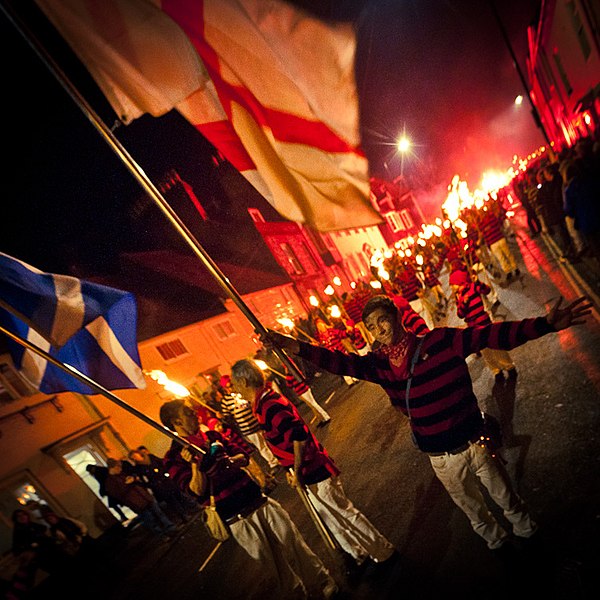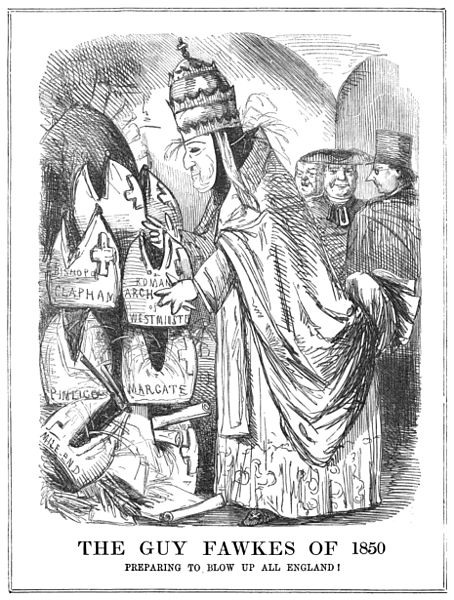An effigy is a sculptural representation, often life-size, of a specific person or a prototypical figure. The term is mostly used for the makeshift dummies used for symbolic punishment in political protests and for the figures burned in certain traditions around New Year, Carnival and Easter. In European cultures, effigies were used in the past for punishment in formal justice when the perpetrator could not be apprehended, and in popular justice practices of social shaming and exclusion. Additionally, "effigy" is used for certain traditional forms of sculpture, namely tomb effigies, funeral effigies and coin effigies.
Burning of Judas Iscariot, Brazil, 1909
Effigy of Ravana, a figure from the Ramayana, with burning sparklers, in Manchester, England, in 2006
Double tomb effigies or gisants, Josselin, Brittany, France; 15th century
A rare wax funerary effigy of a private person, who stipulated it be made in her will, England, 1744. Holy Trinity Church, Stow Bardolph, Norfolk.
Guy Fawkes Night, also known as Guy Fawkes Day, Bonfire Night and Fireworks Night, is an annual commemoration observed on 5 November, primarily in Great Britain, involving bonfires and fireworks displays. Its history begins with the events of 5 November 1605 O.S., when Guy Fawkes, a member of the Gunpowder Plot, was arrested while guarding explosives the plotters had placed beneath the House of Lords. The Catholic plotters had intended to assassinate Protestant king James I and his parliament. Celebrating that the king had survived, people lit bonfires around London. Months later, the Observance of 5th November Act mandated an annual public day of thanksgiving for the plot's failure.
Festivities in Windsor Castle by Paul Sandby, c. 1776
An effigy of Fawkes, burnt on 5 November 2010 at Billericay
Revellers in Lewes in East Sussex, 5 November 2010
The restoration of the Catholic hierarchy in 1850 provoked a strong reaction. This sketch is from an issue of Punch, printed in November that year.








